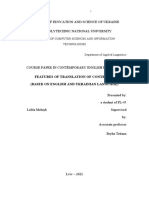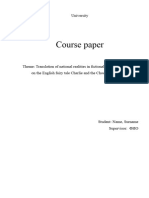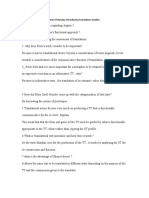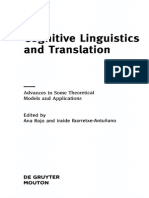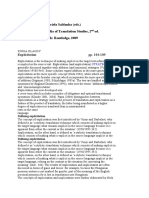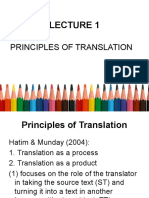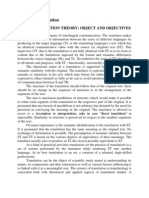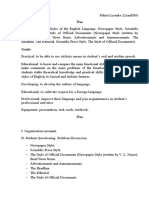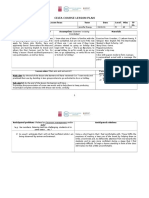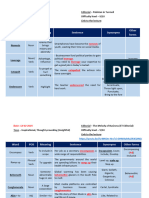0% found this document useful (0 votes)
405 views10 pagesInvestigating Specialized Discourse
This document discusses specialized discourse and its key features. It defines specialized discourse as the use of language in specific contexts like academic, professional, or technical fields. Specialized discourse is characterized by:
- Monoreferential terms that have a single, fixed meaning within a field.
- Lack of emotive language and emphasis on precise, unambiguous terminology.
- Transparency whereby the meaning of terms is clear from their structure.
- Density of information and emphasis on brevity, clarity, and objectivity over variations in style.
Specialized discourse varies based on factors like disciplinary domain and intended audience, from highly technical exchanges between experts to educational materials for non-specialists.
Uploaded by
8y8qdksxpwCopyright
© © All Rights Reserved
We take content rights seriously. If you suspect this is your content, claim it here.
Available Formats
Download as PDF, TXT or read online on Scribd
0% found this document useful (0 votes)
405 views10 pagesInvestigating Specialized Discourse
This document discusses specialized discourse and its key features. It defines specialized discourse as the use of language in specific contexts like academic, professional, or technical fields. Specialized discourse is characterized by:
- Monoreferential terms that have a single, fixed meaning within a field.
- Lack of emotive language and emphasis on precise, unambiguous terminology.
- Transparency whereby the meaning of terms is clear from their structure.
- Density of information and emphasis on brevity, clarity, and objectivity over variations in style.
Specialized discourse varies based on factors like disciplinary domain and intended audience, from highly technical exchanges between experts to educational materials for non-specialists.
Uploaded by
8y8qdksxpwCopyright
© © All Rights Reserved
We take content rights seriously. If you suspect this is your content, claim it here.
Available Formats
Download as PDF, TXT or read online on Scribd
/ 10







